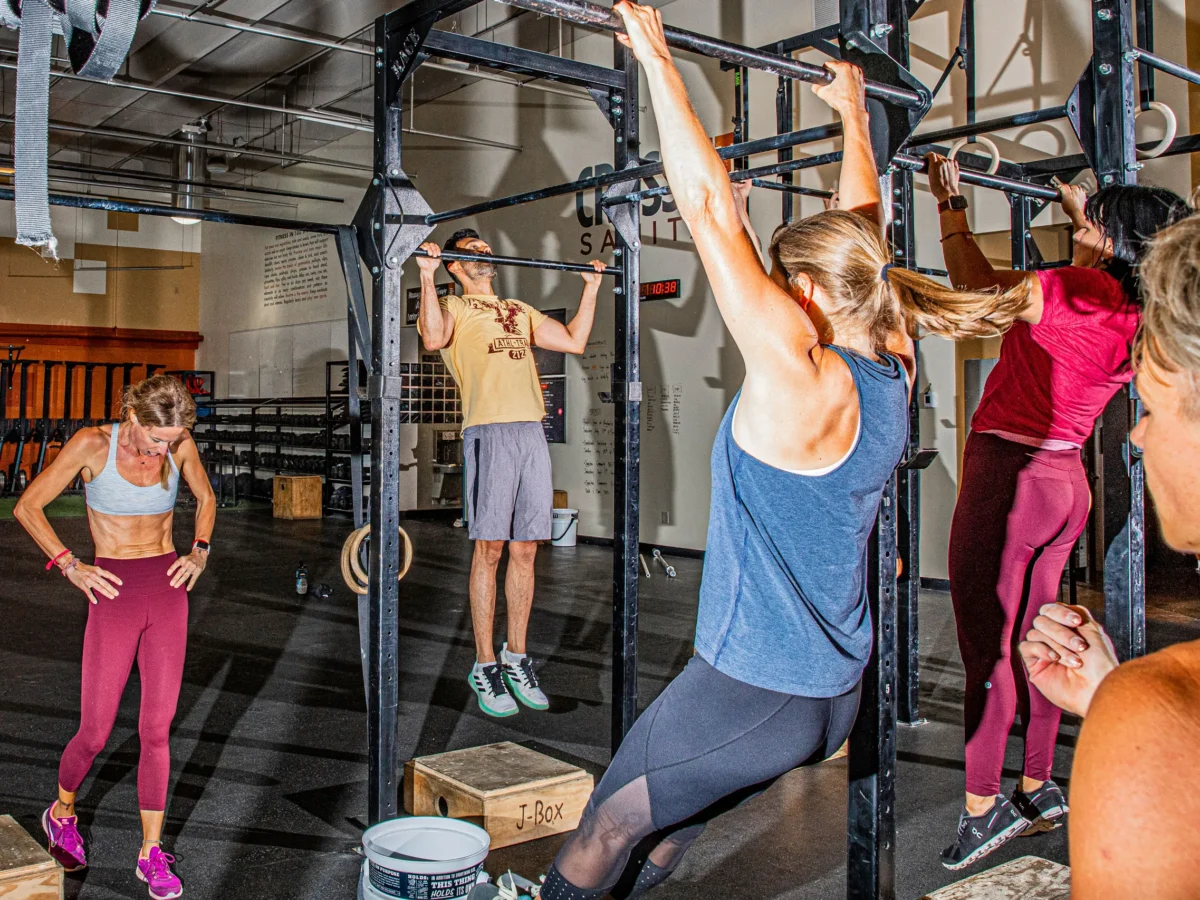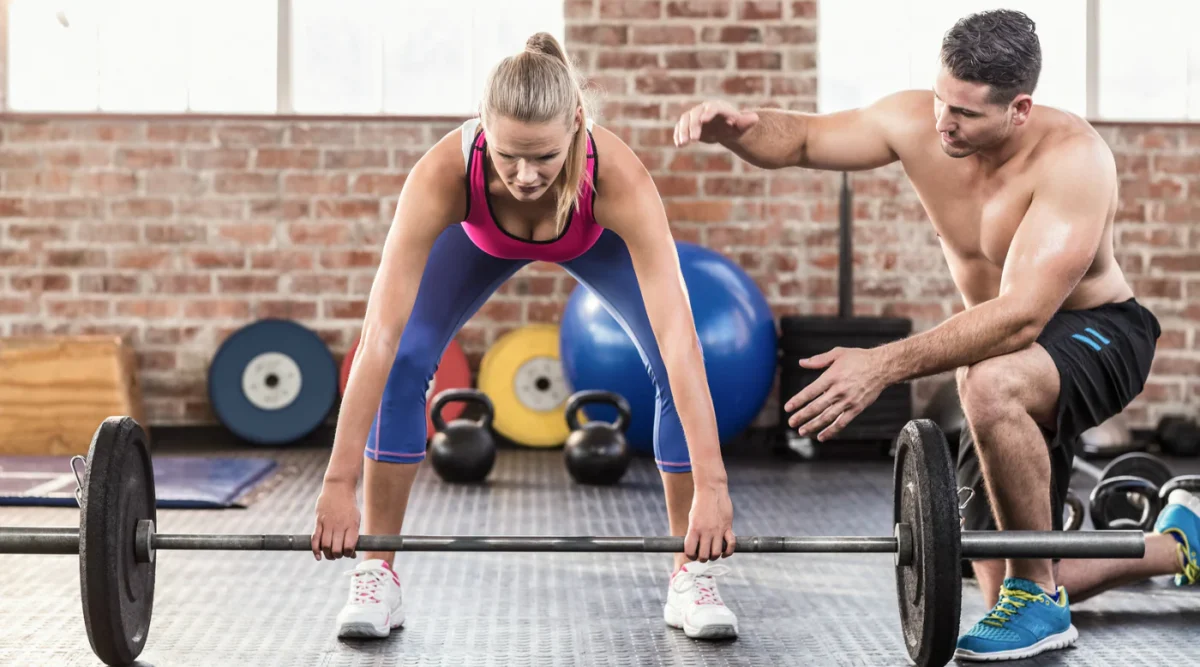
CrossFit is a specific type of high-intensity interval training (HIIT), also known as high-intensity power fitness (HIPT) workout, which has become quite popular worldwide. Developed in 2000, CrossFit takes an entirely different approach to workouts from other types of strength and endurance training.
Instead of focusing directly on one exercise style, CrossFit is promoted as a lifestyle featuring sound nutrition and safe, effective exercise associated with functional movement. That means utilizing exercises that help with daily life tasks, such as translating a deadlift to picking up an object on the floor or squatting to sit down. The goal is to get you better at performing in your regular life with exercises that build speed, stamina, and strength. Climbing stairs, carrying groceries, and even getting out of bed become easier.
The workouts vary daily, incorporating different weights, movements, and more so you do not get bored. High intensity pushes you to work within your body’s physical and psychological ability. Movements such as bench presses, push-ups, sprints, deadlifts, and squats mimic those you use in daily life. You get a well-rounded workout by incorporating bodyweight, mobility, and strength-training exercises with running, modified to your fitness level.
CrossFit gyms are called boxes and are no-frills workout centers as unique as the affiliate. Each box creates its programming and style, following a general concept of four components, beginning with a warm-up, a skill or strength, the workout of the day (WOD), and the mobility or cooldown session.
Breakdown of a CrossFit session:
- Warm-Up: The warm-up gets your body ready for the WOD so that you can perform at maximum capability.
- Strength or skill: If strength is featured, the focus is to help you get strong. When a skill is the focus, it helps improve specific abilities associated with exercise.
- WOD: The WOD focuses on metabolic conditioning, and there are so many possibilities it is rare to do the same program twice.
- Cooldown: Stretching during the cooldown helps prevent lactic acid buildup in the muscles.
CrossFit Differences from Other Exercises

CrossFit differs considerably from other forms of exercise, not in the movements, per se, but in the theory of how the workout is programmed. It is significantly more than a workout – more like a lifestyle. The ultimate goal is to improve the body’s performance in a general way.
CrossFit exercises are performed repetitively and quickly, with little to no recovery time between sets. The exercises help you master different physical tasks.
Here are some of the primary differences between CrossFit and other workout styles and programs:
-
Program changes daily
The programs change daily based on varying loads, durations, movements, and exercise groupings to get a well-rounded workout that hits all areas.
-
Social not solo
Unlike many gyms where people go in and work out independently, paying no attention to others, the CrossFit environment encourages socialization as everyone is encouraging and open to talking about their experiences and goals.
-
Regular benchmark measurements
Benchmark workouts measure your progress, showing you how fit you are. They typically occur every three to six months, depending on the facility.
-
Combines strength and cardio
Instead of focusing solely on muscle-building or aerobic exercise, CrossFit combines multiple approaches. You work out by doing as many reps as possible during an allotted time or, with some exercises, doing them until you cannot do them anymore. The results differ based on how you do that particular exercise on that day.
-
Functional focus
The primary CrossFit goal is to help you improve how you function in your regular life. Exercises are geared at helping you do your daily routine with better agility and ability.
-
Utilizes different exercise styles
CrossFit draws its techniques and movements from various areas, incorporating weight-lifting, cardio, plyometrics, calisthenics, gymnastics, and other training methods for a well-rounded approach.
-
Focuses on high intensity
Maximizing your intensity helps increase your anabolic threshold, cardiac capacity, and workout effectiveness.
-
Is Paleo-friendly
CrossFit promotes a diet rich in vegetables, protein, seeds, nuts, fruit, low starch, and zero sugar – essentially following a paleo diet for maximum results.
Benefits of CrossFit

Because the focus is not one-track-minded, such as muscle-building, CrossFit provides numerous benefits for fitness and health. The high-intensity approach helps you burn more calories than with many other forms of exercise. It helps improves coordination, balance, strength, and overall fitness.
Here are some of the leading benefits of CrossFit:
-
Improves stamina and endurance
The new challenges each day help you build stamina and aerobic fitness as you increase the maximum rate of oxygen your body can use during exercise (VO2 max).
-
Heart health
It takes only a few minutes to make a cardiovascular difference while working out. The high intensity of CrossFit helps improve heart health markers, including blood pressure and VO2 max, lowering your risk of heart disease.
-
Mental health
The CrossFit workout fosters positive self-talk and mental positivity as you work through the exercises. Your brain benefits from knowing that you are capable of more than you thought. Pushing yourself further increases mental toughness, increasing self-confidence in other areas of your life as you learn you can push through anything.
Strengthen muscles and bones
CrossFit helps increase muscle strength, and adding heavier weights increases muscle mass. With CrossFit, getting lean body mass is easier and more reliable. Olympic weight-lifting, resistance training, and lifting weights work by targeting more than one muscle group at a time. Discover what lean muscle mass is and how you can get it faster. Working out your muscles and weight-training also helps increase bone mineral density. Each day’s varying workout allows for continuous challenges to your body, with compound movements providing improved strength and overall fitness.
-
Get agile and flexible
Because CrossFit helps you focus on functional exercises, these movements mimic those you use daily. Specific benefits in balance, flexibility, and agility come from exercises such as overhead presses, kettlebell swings, and squats.
-
It helps support weight loss
CrossFit’s high-intensity compound exercises help increase caloric burn during the workout and may extend to post-exercise recovery. Weight-lifting keeps calories burning well after you finish exercising. Since you gain muscle, your metabolism increases. Combining CrossFit with a paleo diet can help maximize your weight loss.
-
Friendly competition
As you work through the CrossFit program, you learn new skills and foster friendships with everyone around you, building a sense of community. You can challenge each other to push harder while having fun. In addition, the annual CrossFit Games feature individual and team competitions and local, regional, and national events.
CrossFit Is Not Suitable for Everyone

As with any high-intensity workout, the risk of injuries increases. The heavier the weights, the more likely you are to experience rotator cuff tendonitis, low back pain, Achilles tendonitis, tennis elbow, knee injuries, and other muscle sprains. Taking proper care to follow instructions and working with a trainer can help reduce these risks that can occur with any exercise program.
Beginners to CrossFit should start slow, even if you exercise regularly. Work with a trainer to ensure you perform each exercise correctly, gradually increasing your weights and reps as you improve your fitness and ability level.
Check with your doctor first if you fall into any of the following categories:
- During pregnancy: do not start CrossFit during pregnancy without medical approval. If you are already practicing CrossFit, you can continue after first speaking with your doctor.
- If you’re injured or have other serious health concerns: please speak with your doctor or physical therapist to discuss CrossFit before getting started. CrossFit is not for someone with cardiovascular diseases or multiple heart disease risk factors.
- Over the age of 65: CrossFit may or may not be the best program for you, depending on your physical condition. Speak with your doctor before starting any new workout program.
Conclusion
CrossFit is an excellent option for people who want to build strength, lose weight, and improve their flexibility, agility, and overall fitness. The CrossFit classes focus on creating community, so it is not designed for people who like to work out on their own at their own pace.
CrossFit provides you with an intense, efficient workout program in a supportive community that provides many benefits for your body, health, and life.








